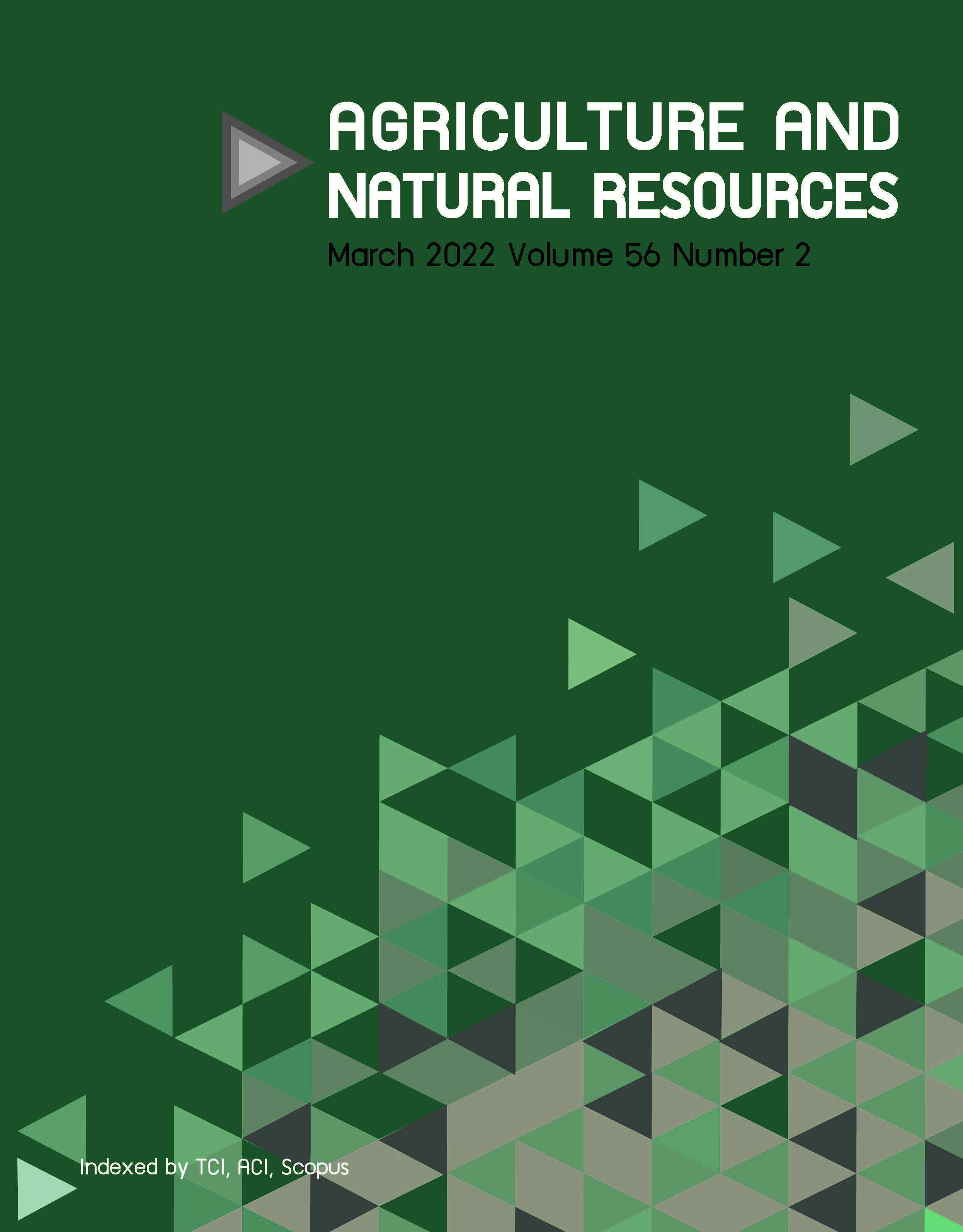Growth, bioactive compound accumulation and antioxidant activity in rhizomes and storage roots of Boesenbergia rotunda (L.) Mansf.
Keywords:
DPPH radical scavenging activity, Fingerroot, Flavonoid, Phenolic, PinostrobinAbstract
Importance of the work: Boesenbergia rotunda (L.) Mansf. is one of the most important plants in traditional Thai medicine. Therefore, the choice of harvesting time is crucial to meet the needs of the pharmaceutical sector.
Objectives: To investigate the growth, bioactive compound accumulation and antioxidant activity in the rhizomes and storage roots of B. rotunda.
Materials & Methods: The development of both aboveground and underground parts was tracked 2–11 mth after planting (MAP) and the accumulation of bioactive compounds in the rhizomes and storage roots was tracked 6–11 MAP.
Results: Shoots and leaves developed rapidly until 7 MAP, at which point senescence began; these organs had completely dried-out by 8 MAP. Rhizomes and storage roots entered maturity at 7–8 MAP and then entered senescence. The contents of pinostrobin (rhizomes: 78.77 ± 10.07–94.13 ± 4.33 mg/g dried extract (DE); storage roots: 114.02 ± 3.00–126.64 ± 8.69 mg/g DE) and of total flavonoids (rhizomes: 204.35 ± 4.46–239.54 ± 28.07; storage roots: 181.88 ± 9.70–256.59±7.35 mg quercetin equivalents/g DE) did not vary significantly during 6–8 MAP, but decreased during 9–11 MAP. The total phenolic accumulation was stable in the rhizomes during 6–11 MAP, whereas that in storage roots decreased from 9 MAP. The strongest antioxidant activity was observed in the storage roots with a 50% antioxidant effect value of 18.27 ± 0.70 μg/mL compared to the rhizomes of 12.55 ± 1.02 μg/mL, when harvested at 8 MAP.
Main finding: For medicinal purposes, the rhizomes and storage roots of B. rotunda should be harvested at 7–8 MAP.
Downloads
Published
How to Cite
Issue
Section
License
Copyright (c) 2022 Kasetsart Universityonline 2452-316X print 2468-1458/Copyright © 2022. This is an open access article under the CC BY-NC-ND license (http://creativecommons.org/licenses/by-nc-nd/4.0/),
production and hosting by Kasetsart University of Research and Development Institute on behalf of Kasetsart University.







